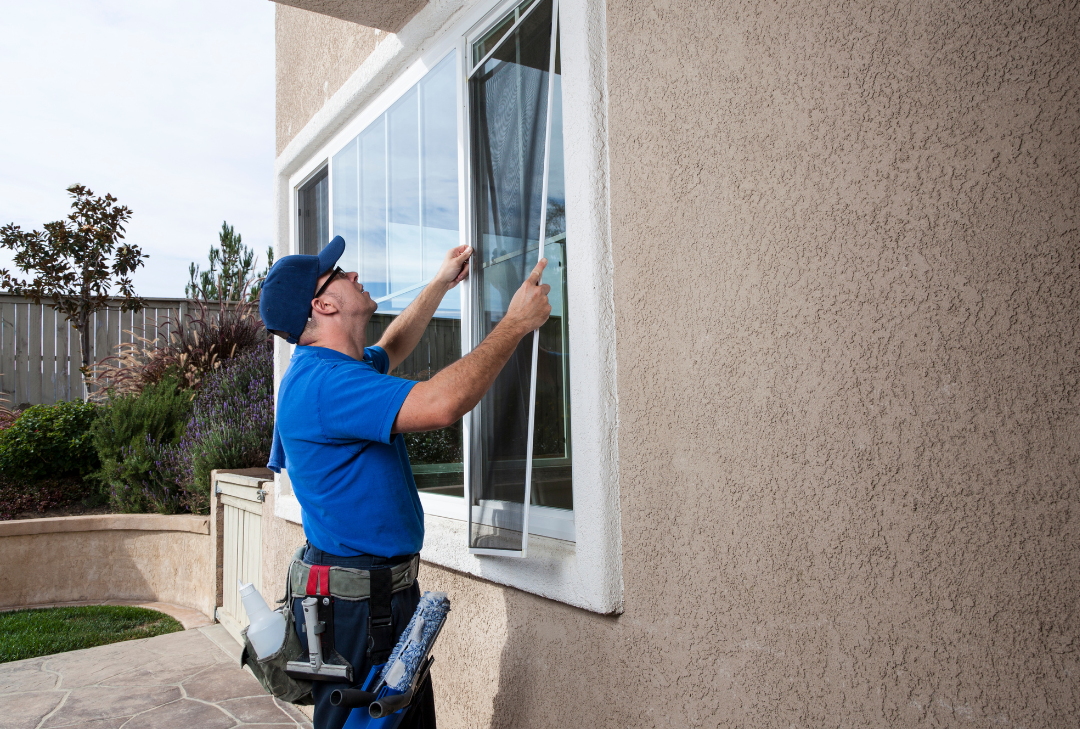
Outside of “are there enough of them” or “will they let in enough natural light,” windows aren’t typically top of mind for most people. Despite being an important detail that can help add to the value of your home, it’s typically not until problems such as physical damage, drafts, water leaks, or noise pollution appear that windows are considered.
Though it’s common in homes 20 years or older still fitted with their original windows, it goes without saying updating or completely replacing windows will be necessary at one stage or another. But how do you know when it’s time to change or upgrade your windows? How do you determine the type of window that best suits your home and their impact on your home’s energy-efficiency? Let’s find out!

What are your options when it comes to updating your windows?
When it comes to selecting your window style, there are many variations and combinations to choose from to fit both your style and budget. There are different frame materials to consider, not to mention glazing, coatings, number of panes, filling, and more. Oh, and let’s not forget the operating style.
The designs are far reaching and popular options include:
- Awning windows: Typically situated above doors or other window styles, awning windows are hinged horizontally at the top of the frame, and swing open and close from the bottom with a simple crank handle.
- Casement windows: Usually consisting of a large pane of unobstructed glass, casement windows are hinged vertically along one side and open and close much like a door with a crank handle.
- Transom windows: A transom is the beam that separates the top of a door or window from the rest of the wall, as such, transom windows are commonly found on top of front doors, they allow natural light to flood into entranceways.
- Bay windows: As pictured above, bay windows form a bay in a room by projecting outwards from the wall. Consisting of three window panels, there are normally two functional angled windows on either side of the middle window panel that is generally non-functional.
Aside from looking pretty and letting in natural light, one of the most important functions of windows is protection—from the elements and noise. This is where weighing up the advantages and disadvantages of single-, double-, or triple-pane windows (also known as window glazing) plays a key role.

While single-pane windows are less likely to break the bank initially, they’re also the least energy efficient. As a result of their lightweight material and single pane of glass, these tend to do a poor job of insulating and reducing noise. On the other hand, double-pane windows, though typically more costly up front, are more durable and offer better insulation. They’re also a great solution for noise reduction. Finally, lasting in excess of 25 years when properly installed and maintained, triple pane windows have the added benefit of improved thermal regulation due to three panes of glass (and gas filled between each), so your home will be better insulated against extreme hot and cold.

Are energy-efficient windows worth the investment?
In a word, yes! Window technology has come a long way, and energy-efficient windows are designed to increase your home’s insulation by preventing hot and cold air from escaping, and reducing condensation. According to Hydro One, “up to 25% of your home heating costs may be attributed to leaking through doors, windows, outlets and vents.”
The benefit of increased insulation is it can significantly reduce your home’s energy usage, which directly impacts your energy bills. Energy-efficient windows are not only cost-effective, they can add value to your home. But what makes windows more energy efficient? Well…
- the number of window panes (the higher the number, the better the insulation);
- the material used for the window frame—vinyl is recognized as one of the best options for insulation, though fibreglass and wood are also viable options;
- low emissivity (or Low-E) coatings applied on the exterior side of the glass to increase insulation;
- window spacers to ensure there’s an equal distance between each sheet of glass;
- window gas fillers that provide additional thermal regulation; and
- proper installation.
What’s more is that there are numerous government rebates and across Canada, including the federal Canada Greener Homes Initiative, for replacing old windows with energy-efficient ones. So long as you meet the criteria, you could receive upwards from $500 depending on your province and incentive program.

When’s the best time to update your windows?
While many Canadian homeowners are apprehensive about replacing their windows, or take on any home renovations in the winter months, it could be considerably less expensive and quicker to do than in the summer months.
There’s a general misconception that updating your windows in the winter will render sealants or insulating foam less effective, but when the correct materials are used, windows can be installed in temperatures as low as -20 degrees Celsius!
Bear in mind if you want to replace existing windows with larger ones, structural modifications will be required, as well as the design expertise of a structural engineer, not to mention a potential building permit—all of which will increase the final cost of installation and your overall timeline.
However, with many homeowners rushing to complete renovation projects in the spring and summer, the winter months are when you’re likely to get the biggest bang for your buck.
While updating your windows may not be top of mind until an issue pops up, understanding your options can be beneficial when the time does come to replace them, taking away some of the stress associated with the decision-making process.
Courtesy: realtor.ca
Posted by Infinity Admin on
Leave A Comment